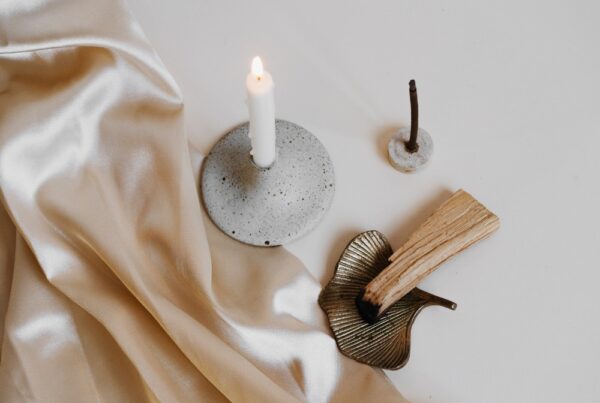
Today’s post is written by my good friend and soul sister, Sylvia Ng of Arawme.
Many of us may not be aware but we already hold this innate ability to self-soothe since we were born.
Self-soothing is a term coined for our ability to nurture, treat and heal ourselves to feelings of betterment. This includes moving past difficult emotions including anxiety, fear, stress or when we are feeling physically or mentally drained. However, do note that self-soothing does not solve the root of the problem within the stuck emotion, it is just a temporary and immediate relief to a feeling of betterment in the present moment. Self-soothing does not replace the need for therapy or inner work as we are basically developing ways to hold space for ourselves in a compassionate and loving way. If you like to work on intentionally releasing the stored emotional blockage, I would recommend you giving a read about Emotional Freedom Technique (EFT) here.
Ever remember seeing yourself in the old photographs as an infant— sucking your thumb? Thumb sucking is one of the ways we self-soothe as infants. What about hugging your favorite soft toy when you were going to sleep? That is self-soothing too.
Around the age of 2- 3 months old, we are already capable to develop our unique ways to calm ourselves down when our parents or guardians were not around. An example of such is when we are left in our crib or when we wake up in the middle of the night. We learn to self-soothe by ourselves to sleep independently without the need to rely on our parents/guardians. Self-soothing is a variety of ways we use to treat ourselves without the presence and reliance on the other. As we grow older, our self-soothing methods also adjust according to our age, settings and individual preferences that we deem suitable and appropriate accordingly. However, if your upbringing involves emotionally/ physically absent/abusive parents or an overall unhealthy and dysfunctional family, your experiences with learning how to self-soothe may either be disrupted or accelerated.
If you are not familiar with this term of self-soothing, you may find yourself unconsciously already self-soothing in your physical life as you read this article. More than we acknowledge, we already hold our individual and unique ways to self-soothe. Some of which may be obvious/noticeable to others but unconscious to you. Some of which may only surface and become prominent when we are feeling different states of anxieties. Below are some obvious/noticeable ways of self-soothing:
Noticeable Methods of Self-Soothing
- Leg shaking
- Foot tapping
- Thumb sucking
- Nail-biting
- Skin scratching
- Having a soft toy
Anxiety is our biggest reason to self-soothe.
Anxiety could spiral from other emotions including fear, stress, worry, lack of self-love, and lack of confidence. It is also the largest indicator of many anxiety-based mental disorders including PTSD or overly-sensitized nervous systems. Needless to say, there are healthy and unhealthy forms of self-soothing that we may unconsciously or consciously be taking up already. It is important to acknowledge and have the awareness of them even if they are unhealthy — so we can shift them into positive ones. Below are some examples of unhealthy forms of self-soothing:
Unhealthy Forms of Self-Soothing
- Unhealthy/excessive alcohol/drug use and abuse
- Compulsive spending/eating
- Gambling
- Unhealthy form of eating (under/overeating)
- Overworking
- Bad sleeping habits
- Smoking
Importance of Self-Soothing
Everyone has our own unique techniques of self-soothing that we feel acceptable and comfortable for ourselves. There is not one, absolute technique that works for everyone. Most of all, it is okay to need self-soothing. In a fast-paced world where anxiety and mental health is frown upon or not widely supported and acknowledged, I would like to remind you that it is our duty to be able to self-soothe. Like having boundaries, self-soothing is not something to feel embarrassed or guilty about. It is after all a form of self-care conditioning. When we learn to self-soothe, we are also less dependent on others which may result in codependent relationships. We learn to sit with what is, instead of emotionally bypassing it. You can look at them as a safety net of our unique grounding techniques.
SELF-SOOTHING STRENGTHENS US AND PROVIDES US WITH SAFETY.
1. TACTILE
Use a weighted blanket or a thick wooly blanket when you are feeling down/anxious. They put you in an immediate relaxative state to calm you down. A rule of thumb is to get a weighted blanket that is approximately 10% of your body weight. Self-holding is also another tactile method of self-soothing. It is a way to give yourself a hug when you don’t have anyone around to give you one. Just find a quiet moment and wrap both your arms across the opposite shoulder-just like you are hugging yourself! It is not surprising for a person to instinctively offer a hug to someone they know who is struggling- so do the same for yourself! Hugging is known to combat the stress hormone, Cortisol and release positive hormones, Oxytocin.
2. SMELL
With a growing popularity and interest in aromatherapy, it is not unfamiliar why scent is such a powerful tool. According to Psychology Today, the power of smell is able to trigger our brain to a time/space/emotion where other senses like visual, auditory and tactile are unable to take you. One of my favorite ways to self-soothe is with my essential oil blends. My to go for essential oil scents to calm myself include lavender, peppermint, frankincense and ylang-ylang. It is important to always do a patch test before applying topically. Do note that a few drops of pure, undiluted essential oil is more than enough to be rolled onto your skin (I would usually roll it on the inside of my wrist) or you could opt for an essential oil blend where a carrier oil is used to dilute it. Other methods that harness scent for self-soothing include using scented candles or having a refillable lavender sachet or potpourri near you.
3. VISUAL
Who does not feel a shift in their emotions after watching some puppy/kitten videos or photos? Visual self-soothing methods could include watching or re-watching your favorite comedy film or television show. It could also be as simple as taking a walk on the beach, noticing the crashing of the waves, or laying on the grass and watching the trees sway and the clouds float past you. Gentle-Hand Technique is another visualization method where one will rest their palm on the area where one feels the most discomfort when they are experiencing strong emotions. It is a safe and effective technique that helps you notice a shift in your emotions right away. It is a method that I dive into in the Inwards section of Bhava: Your Mindfulness Self-Love Toolkit.
4. AUDITORY
Living in the city does not expose me to immediate exposure to nature around me, hence I generally lean on listening to music to self-soothe. I enjoying mixing upbeat music like reggaeton and calming music like solfeggio frequencies with sounds of nature in the background. Whenever I feel a blockage in one of my chakras, I will pick the frequency associated with it or intuitively pick what I am drawn to- it is important to allow the stream of intuition to guide you as the one you pick is usually the one you need.
5. TASTE
Drinking specific herbal calming teas like chamomile, peppermint, rooibos and dandelion tea is most helpful for me to feel calm instantly. Each type of herbal tea holds an array of benefits that not only promotes relaxation but also helps in improving your immunity, lowering your cholesterol and improve your digestion too. I do recommend you to look into them specifically for it. A hot bowl of soup also works tremendously in terms of self-soothing too.
Learning to cope with stress and anxiety is crucial for our mental health and we deserve to hold our own unique ways to self soothe. But most of all, it is important to mindfully acknowledge that these coping mechanisms only offer us temporary relief to our emotions and we still, do need to work on these blocked emotions. Self-soothing offers us with this feeling of safety that only we can master, and hence make us less dependent on others. Strengthening our skillset to self-soothe makes us mentally resilient. Feel free to give any of the examples of self-soothing a try and let me know at the bottom if you have other ideas or methods that have worked for you so others can learn from them too!
Sylvia Ng is the pen and muse of Arawme. Arawme is dedicated to support anyone on the journey of remembrance, of cultivating your authenticity and aligning your life with your values and your truth. Her mission is to guide you to remember. She shares intuitive and mindful posts intertwining personal growth and spirituality, infusing astrology, human design and kundalini insights. Feel free to check her site out here or nourish yourself with a free downloadable toolkit in getting clarity and navigating your true embodiment of self-love. Or come say hi to her on Instagram and Facebook!





